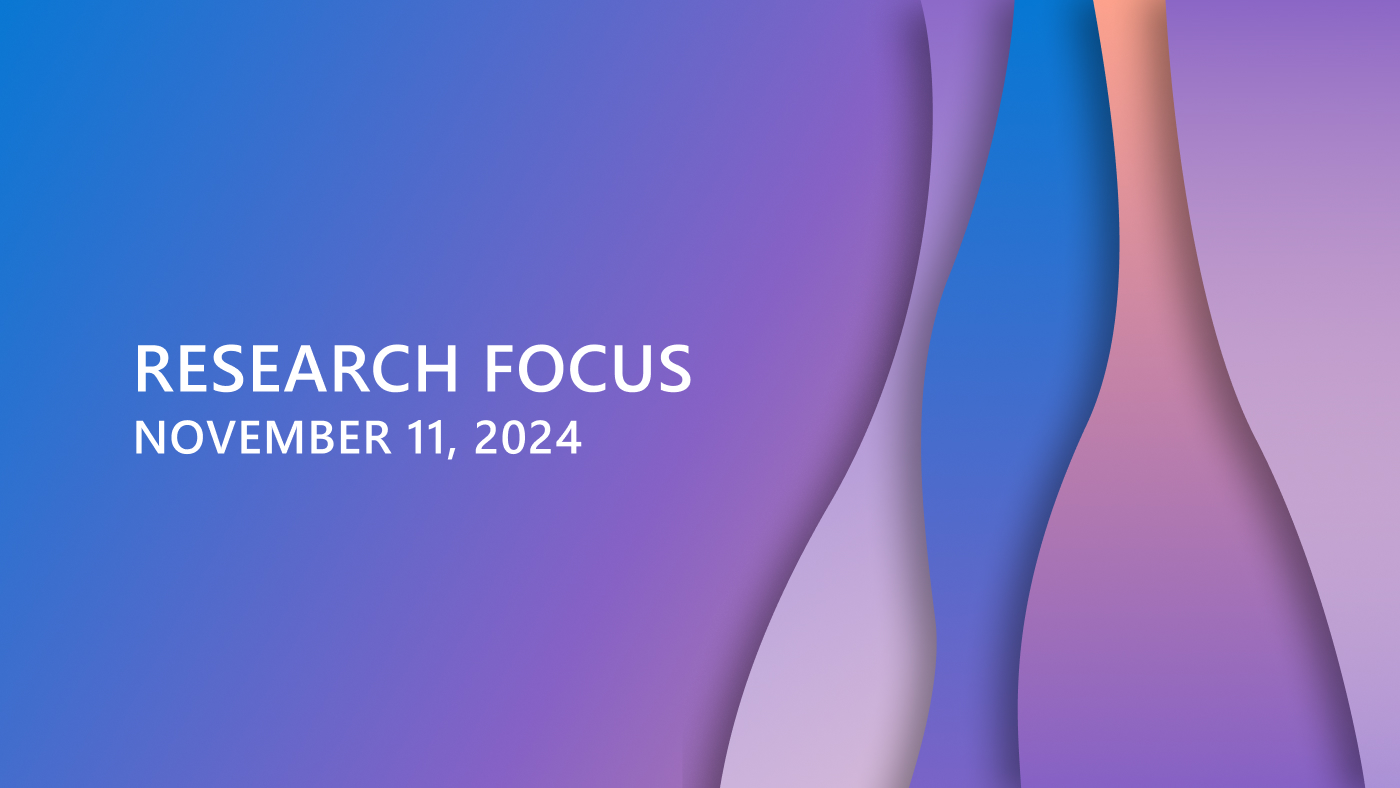Welcome to Research Focus, a series of blog posts that highlights notable publications, events, code/datasets, new hires and other milestones from across the research community at Microsoft.

NEW RESEARCH
Look Ma, no markers: holistic performance capture without the hassle
Motion-capture technologies used in film and game production typically focus solely on face, body, or hand capture, requiring complex and expensive hardware and lots of manual intervention from skilled operators. While machine-learning-based approaches can overcome these challenges, they usually only support a single camera, often operate on a single part of the body, do not produce precise world-space results, and rarely generalize outside specific contexts.
In a recent paper: Look Ma, no markers: holistic performance capture without the hassle, researchers from Microsoft introduce a technique for marker-free, high-quality reconstruction of the complete human body, including eyes and tongue, without requiring any calibration, manual intervention or custom hardware. This approach produces stable world-space results from arbitrary camera rigs while also supporting varied capture environments and clothing. The researchers achieve this through a hybrid approach that leverages machine learning models trained exclusively on synthetic data and powerful parametric models of human shape and motion. They evaluate their method on a number of body, face, and hand reconstruction benchmarks and demonstrate state-of-the-art results that generalize on diverse datasets.
NEW RESEARCH
Building AI Agents for Autonomous Clouds: Challenges and Design Principles
Using AI agents for operational resilience of cloud services, which currently require significant human effort and domain knowledge, is a high-impact application. Interest is growing in AI for IT Operations (AIOps), which aims to automate complex operational tasks like fault localization and root cause analysis, thereby reducing human intervention and customer impact. However, achieving the vision of autonomous and self-healing clouds though AIOps is hampered by the lack of standardized frameworks for building, evaluating, and improving AIOps agents.
In a recent paper: Building AI Agents for Autonomous Clouds: Challenges and Design Principles, researchers from Microsoft lay the groundwork for such a framework by first framing the requirements and then discussing design decisions that satisfy them. The researchers also propose AIOpsLab, a prototype implementation leveraging agent-cloud-interface that orchestrates an application, injects real-time faults using chaos engineering, and interfaces with an agent to localize and resolve the faults. The paper sets the stage for building a modular and robust framework for building, evaluating, and improving agents for autonomous clouds.
NEW RESEARCH
Towards Neural Synthesis for SMT-Assisted Proof-Oriented Programming
AI-assisted programming offers great promise, but also raises concerns around the trustworthiness of AI-generated code. Proof-oriented languages like F* (opens in new tab) enable authoring programs backed by machine-checked proofs of correctness. Using AI to generate code and proofs in proof-oriented languages helps mitigate these concerns, while also making proof-oriented programming more accessible to people.
In a recent preprint: Towards Neural Synthesis for SMT-Assisted Proof-Oriented Programming, researchers from Microsoft and external colleagues explore using AI to automate the construction of proof-oriented programs. The researchers curate a dataset of 940,000 lines of open-source F* programs and proofs, including software used in production systems ranging from Windows and Linux to Python and Firefox. The dataset includes around 54,000 top-level F* definitions, each representing a type-directed program and proof synthesis problem. A program fragment checker queries F* to check the correctness of candidate solutions. With this dataset, the researchers explore using AI to synthesize programs and their proofs in F*, finding the performance of fine-tuned smaller language models to compare favorably with LLMs, at much lower computational cost.
NEW RESEARCH
One-to-many testing for code generation from (just) natural language
The mostly basic Python programs (MBPP) dataset is commonly used for evaluating natural language models on the task of code generation. Despite its popularity, the original MBPP has two major problems: it relies on providing test cases to generate the right signature and there is poor alignment between “what is asked” and “what is evaluated” using the test cases.
To address these challenges, in their recent “One-to-many testing for code generation from (just) natural language» paper, researchers from Microsoft introduce the “mostly basic underspecified Python programs” or MBUPP dataset. This dataset adapts MBPP to emphasize the natural language aspect by allowing for some syntactic ambiguity (like not specifying the return type of a function) and evaluating generated code on multiple sets of assertions (like each set covering a different return type). Besides iteratively inspecting LLM results to extend the assertions sets, the researchers carefully remove poor alignment from the instructions (like a specific algorithm to use) and perform a majority vote over slightly paraphrased instructions to improve the quality of the dataset. The researchers compare popular open and closed weight models on the original MBPP and adapted MBUPP datasets to highlight the effect of paraphrasing and new test cases on code generation evaluation. The MBUPP dataset is publicly available to encourage its use in evaluation code generation models.





